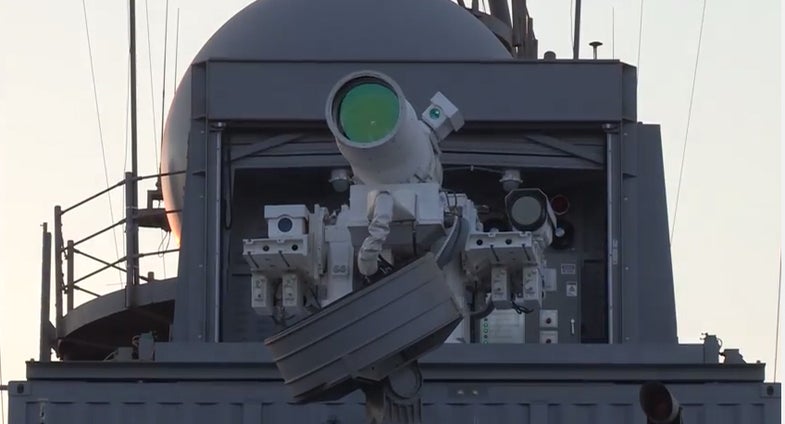The Navy Is Going To Test A Big Laser Soon
150 kilowatts of directed energy, pointed at an unknown date on a calendar.

Damage done by laser weapons is a function of power and time. The longer a laser can stay on a target, like a drone or an incoming missile, the more damage it can do. The more powerful that laser is, the less time it needs to spend burning its target. The U.S. Navy already has a 30-kilowatt laser mounted on a ship. Yesterday, at a summit on directed energy weapons in Washington, D.C., the Navy announced it plans to go bigger: 150 kilowatts.
National Defense Magazine writes:
The lasers previously demonstrated on the USS Ponce are powerful enough to burn through slow-flying targets, but there’s no guarantee that drones in future wars will be as lackadaisical as the drones of today.
Lasers are a part of every service’s plan for the future. The Army plans to have lasers in development by 2023, with tests of lasers carried by attack helicopters this summer. The Air Force wants lasers on large planes by 2022, and plans to use lasers sooner than that to clear runways of landmines. The Marine Corps, together with the Navy, is developing truck-mounted lasers, to protect troops driving over land.
The battlefields of the futures could be defined by beams of powerful, directed energy. At least, if the whole weapon concept doesn’t go up in smoke.
